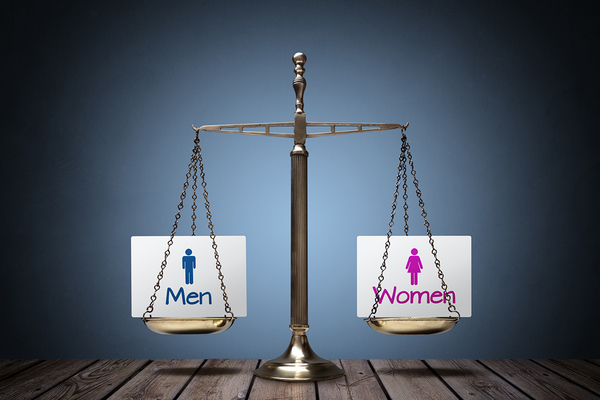You are viewing 1 of your 1 free articles
More than half of UK’s largest associations see gender pay gap grow
The gender pay gap has widened in favour of men at more than half of housing associations, according to analysis by Inside Housing.
The median gender pay gap – the difference between the hourly pay of the middle-ranking woman and middle-ranking man in an organisation – increased in favour of men at 22 of a sample of 43 of the biggest associations that submitted their latest figures before the Friday deadline last week.
The proportion of women in the top pay quartile – made up of the highest-paid employees – fell year-on-year at 23 of 43 associations.
“Housing associations are committed to being excellent employers so I know they will be disappointed if their pay gap has increased this year,” said Kate Henderson, chief executive of the National Housing Federation. “Achieving true equality within an organisation requires a long-term commitment and a complete cultural shift.”
She said many associations are “doing amazing work to close the gap” but there was “a huge amount still to do across the sector”, starting at the federation, which has a 14.6% pay gap.
Under legislation introduced in 2017, organisations with 250 or more employees have to report to the government the difference in average hourly earnings and bonus payments for men and women.
This is the second year of reporting, with the latest figures relating to April 2018.
WM Housing Group recorded the largest percentage point increase in the median gender pay gap among associations analysed by Inside Housing, with the disparity rising from 5.8% to 22% in favour of men.
A group spokesperson said the figures only related to West Mercia Homes and that the group has an overall median gender pay gap of 12.1% (up from 8% in 2017).
Under its current structure, 30,000-home WM Housing Group has to report its figures for its separate legal entities. As Inside Housing announced last week, the group and its subsidiaries will now cease to exist and instead be brought under the new name of Citizen in September.
The median gender pay gap at Sanctuary Group, one of eight legal entities that make up Sanctuary Housing Association, widened by 9.6 percentage points to 20.9%.
“I recognise that we have not made the progress we were aiming for over the past 12 months,” said Craig Moule, chief executive at Sanctuary Group.
“We are committed to recruiting staff from all backgrounds, and we are reviewing our long-term strategy to ensure we are doing everything we can to reduce the gender pay gap within the organisation.”
Click here for full analysis of gender pay gap data for 47 associations
Inclusive Futures
Inside Housing’s Inclusive Futures campaign aims to promote and celebrate diversity and inclusion.
We are pledging to publish diversity audits of our own coverage.
We are also committed to proactively promoting positive role models.
We will do this through the pages of Inside Housing. But we will also seek to support other publications and events organisations to be more inclusive.
Our Inclusive Futures Bureau will provide a database of speakers and commentators from all backgrounds, for use by all media organisations.
We are also challenging readers to take five clear steps to promote diversity, informed by the Chartered Institute of Housing’s diversity commission and the Leadership 2025 project.
INSIDE HOUSING’S PLEDGES
We will take proactive steps to promote positive role models from under-represented groups and provide information to support change.
We pledge to:
Publish diversity audits: We will audit the diversity of the commentators we feature. We will formalise this process and publish the results for future audits twice a year.
Promote role models: We will work to highlight leading lights from specific under-represented groups, starting in early 2018 with our new BME Leaders List.
Launch Inclusive Futures Bureau: We will work with the sector to compile a database of speakers, commentators and experts from under-represented groups. The bureau will be available to events organisers, media outlets and publications to support them to better represent the talent in the sector.
Take forward the Women in Housing Awards: Inside Housing has taken on these successful awards and will work to grow and develop them.
Convene Inclusive Futures Summit: Our new high-level event will support organisations to develop and implement strategies to become more diverse and inclusive.
THE INCLUSIVE FUTURES CHALLENGE
Inside Housing calls on organisations to sign up to an inclusive future by taking five steps:
Prioritise diversity and inclusion at the top: commitment and persistence from chief executives, directors and chairs in setting goals and monitoring progress.
Collect data on the diversity of your board, leadership and total workforce and publish annually with your annual report. Consider gender, ethnicity, disability, sexuality, age, and representation of tenants on the board.
Set aspirational targets for recruitment to the executive team, board and committees from under-represented groups.
Challenge recruiting staff and agencies to ensure that all shortlists include candidates from under-represented groups.
Make diversity and inclusion a core theme in your talent management strategy to ensure you support people from under-represented groups to progress their careers.
THE CASE FOR CHANGE
34%
of housing association chief executives are female
1%
of housing association executives have a disability
1.6%
of housing association board members are LGBT
Women make up 46% of the UK workforce, but Inside Housing research found that they are under-represented on housing association boards (36%), executive teams (39%) and among chief executives (34%).
Almost a fifth of working-age adults have a disability (18%), yet associations reported only 1% of executives and 4.5% of board members with a disability. Many were unable to provide details.
Nationwide, 14% of the working-age population come from a BME background, climbing to 40% in London and Birmingham. Yet our research found that 6.8% of board members identified as BME, compared with 4.5% of executives.
Statistics on representation of LGBT people in the workforce are in short supply, but official statistics suggest that 2% of the total UK population identify as lesbian, gay or bisexual, rising to 4.1% for 16 to 24-year-olds. Our survey found that 1.6% of board members and 10 executives were LGBT – but most organisations were unable to provide figures.






